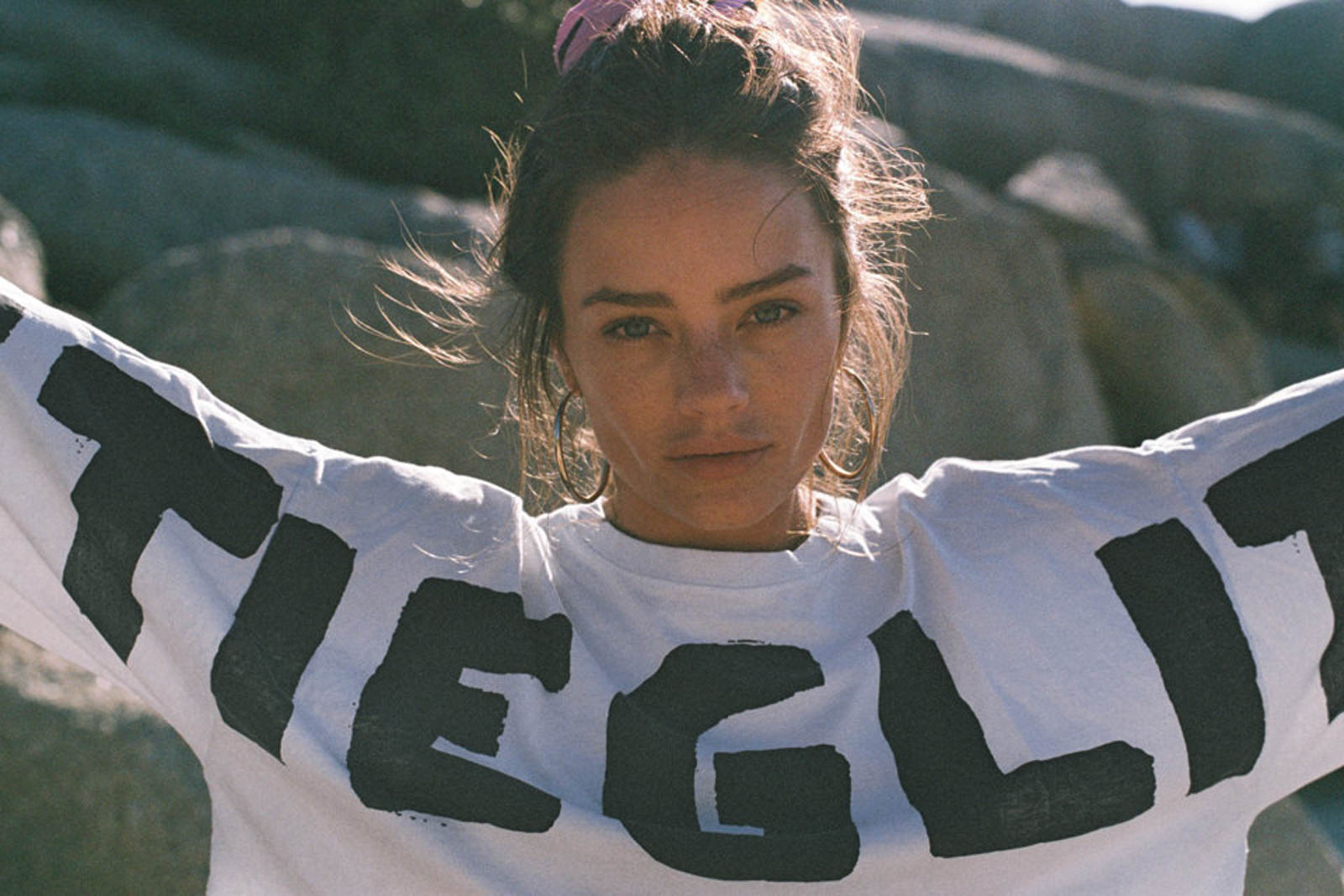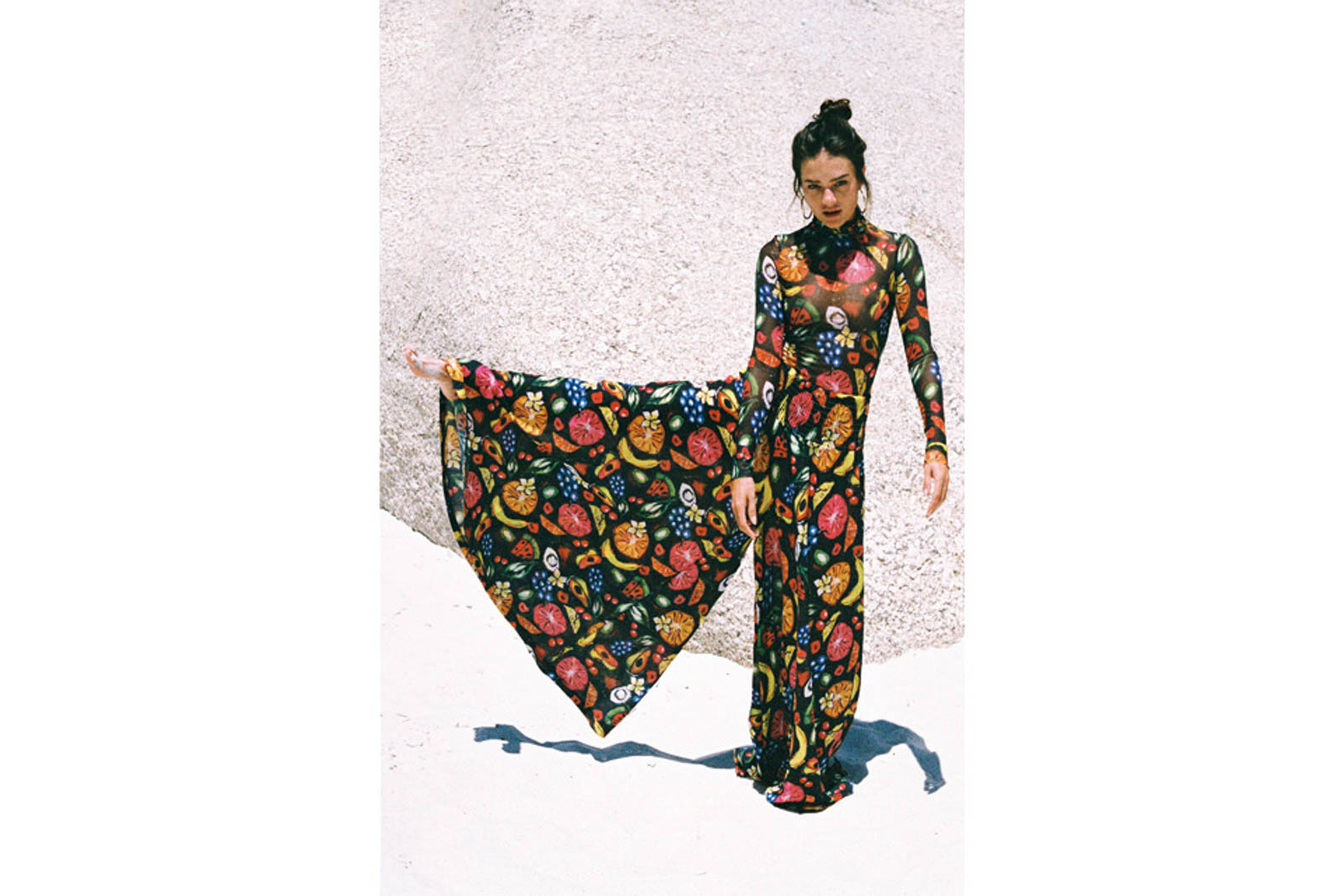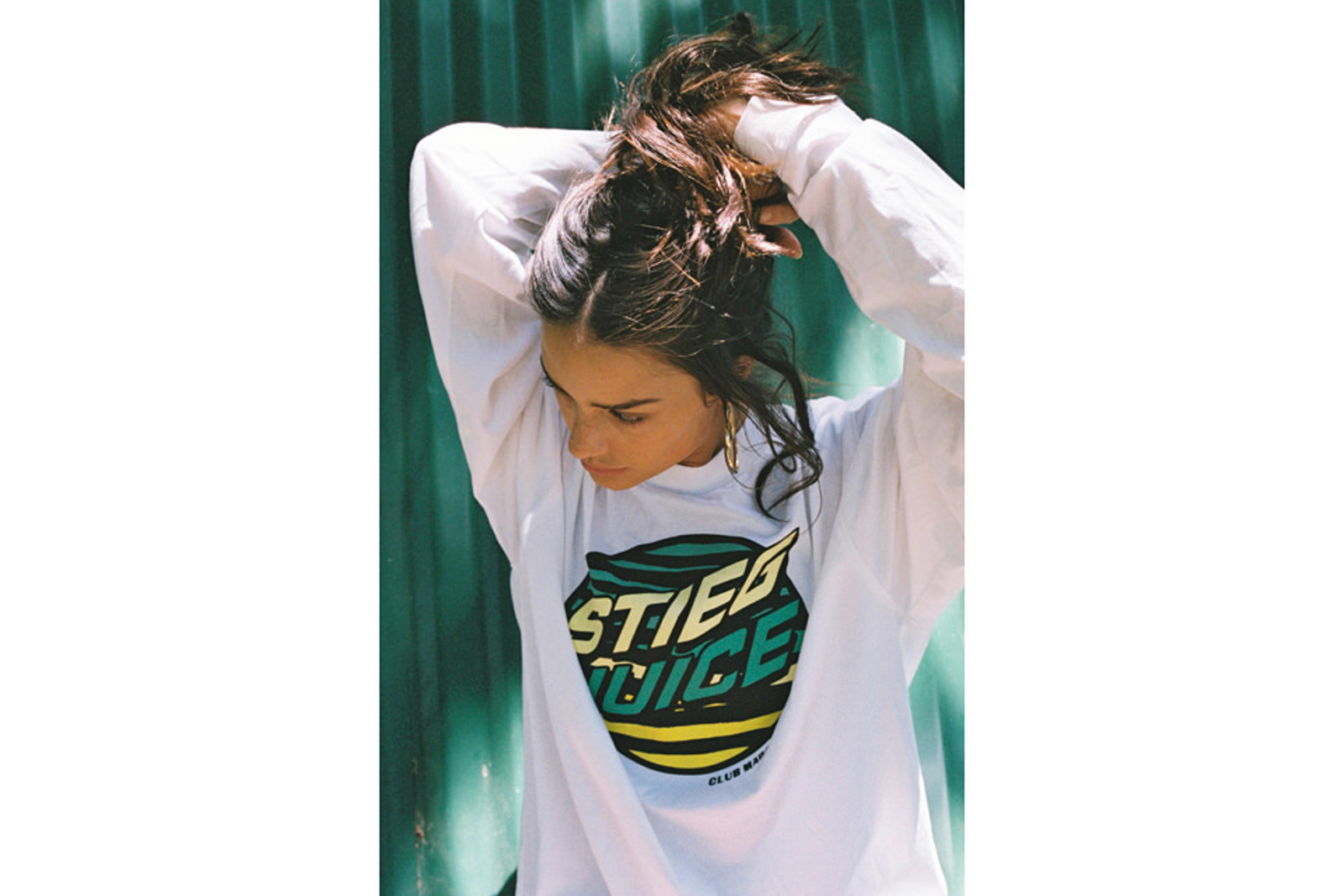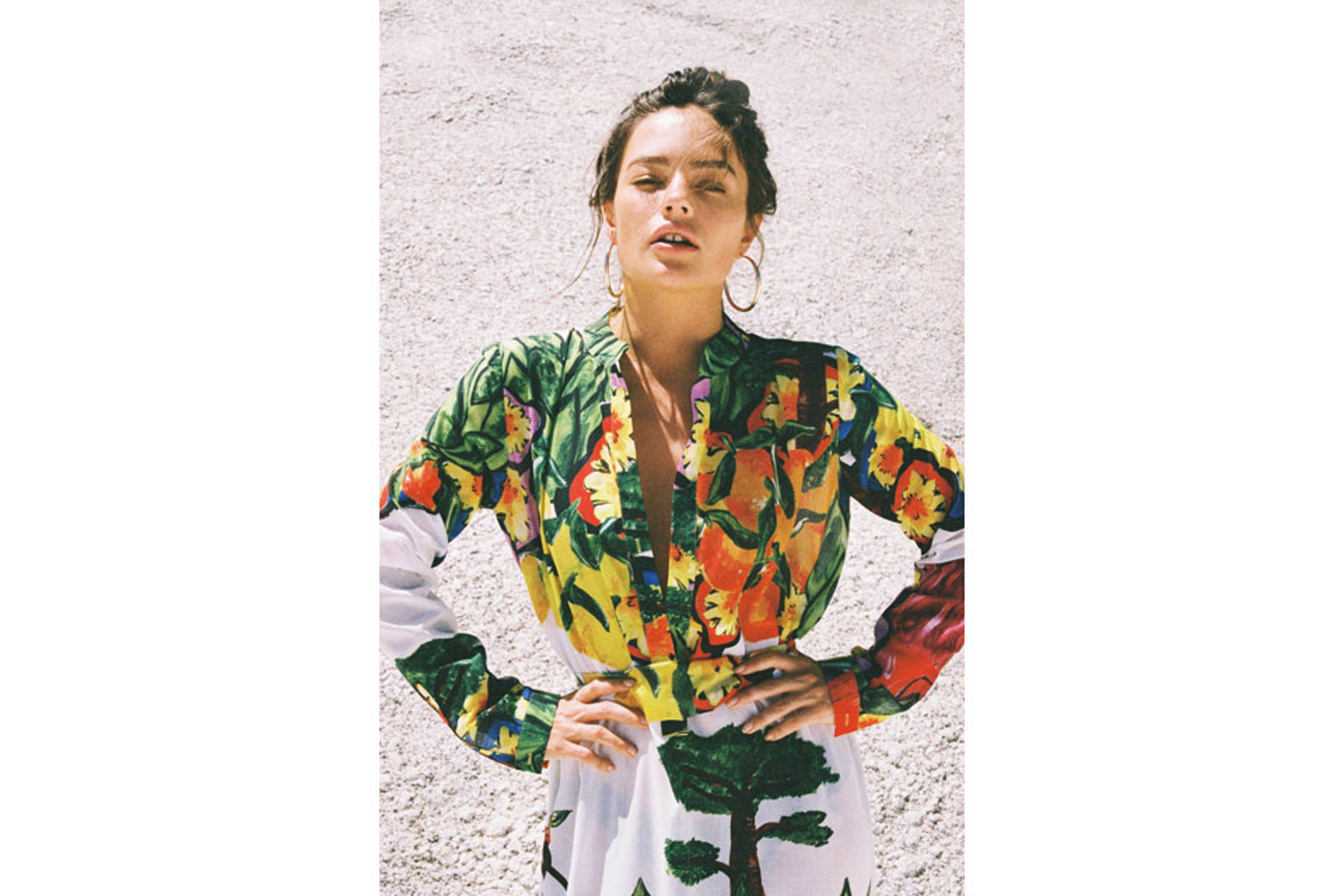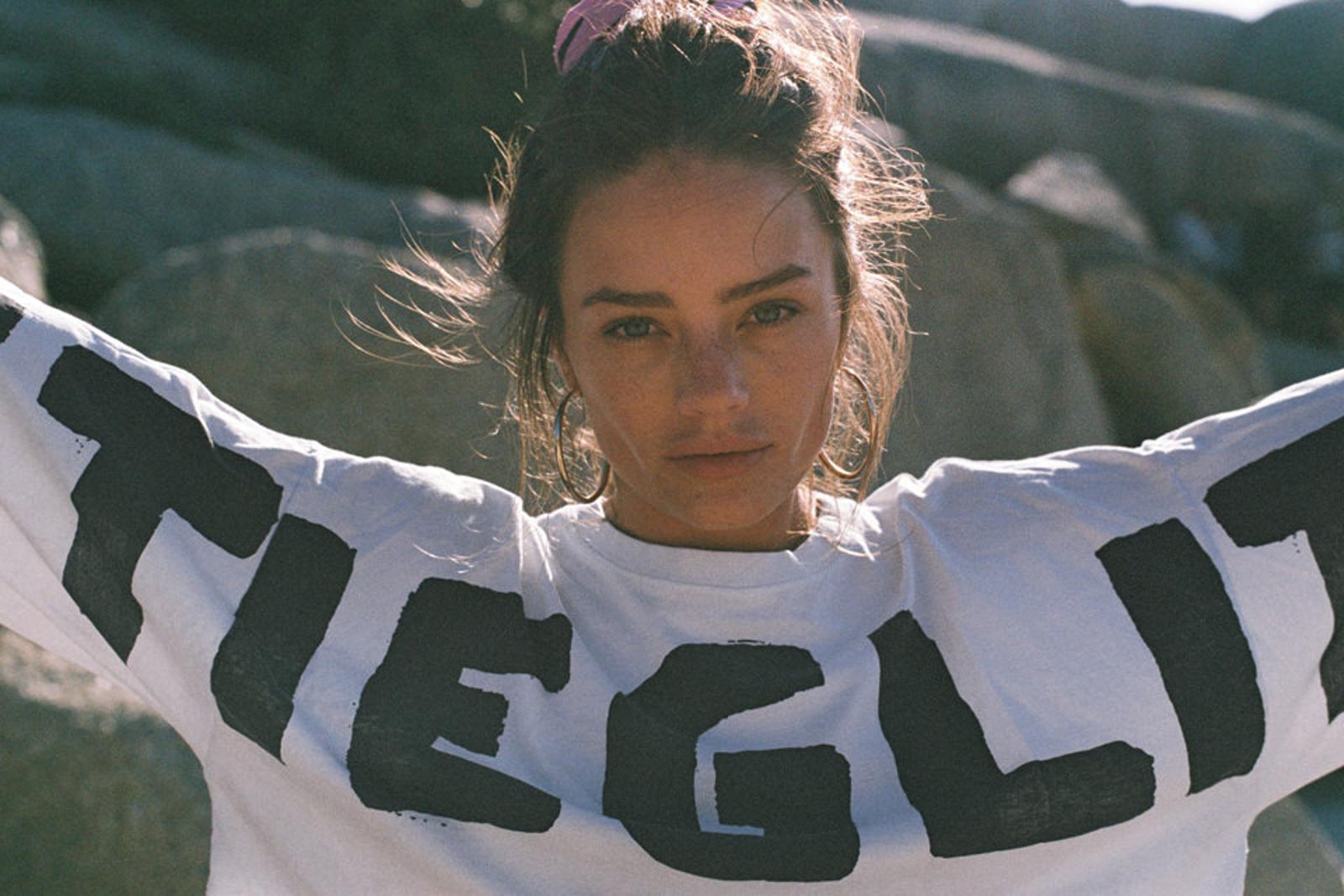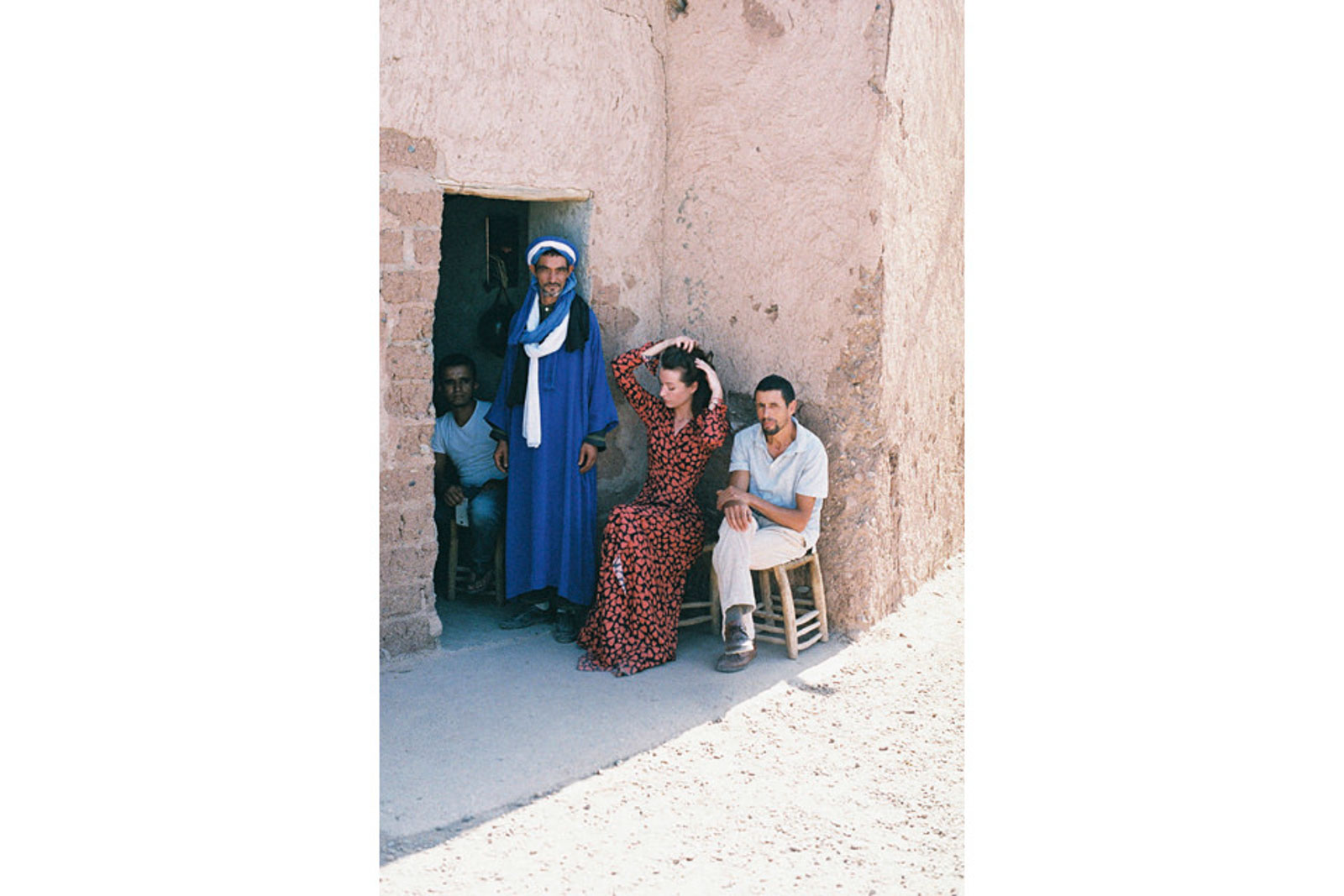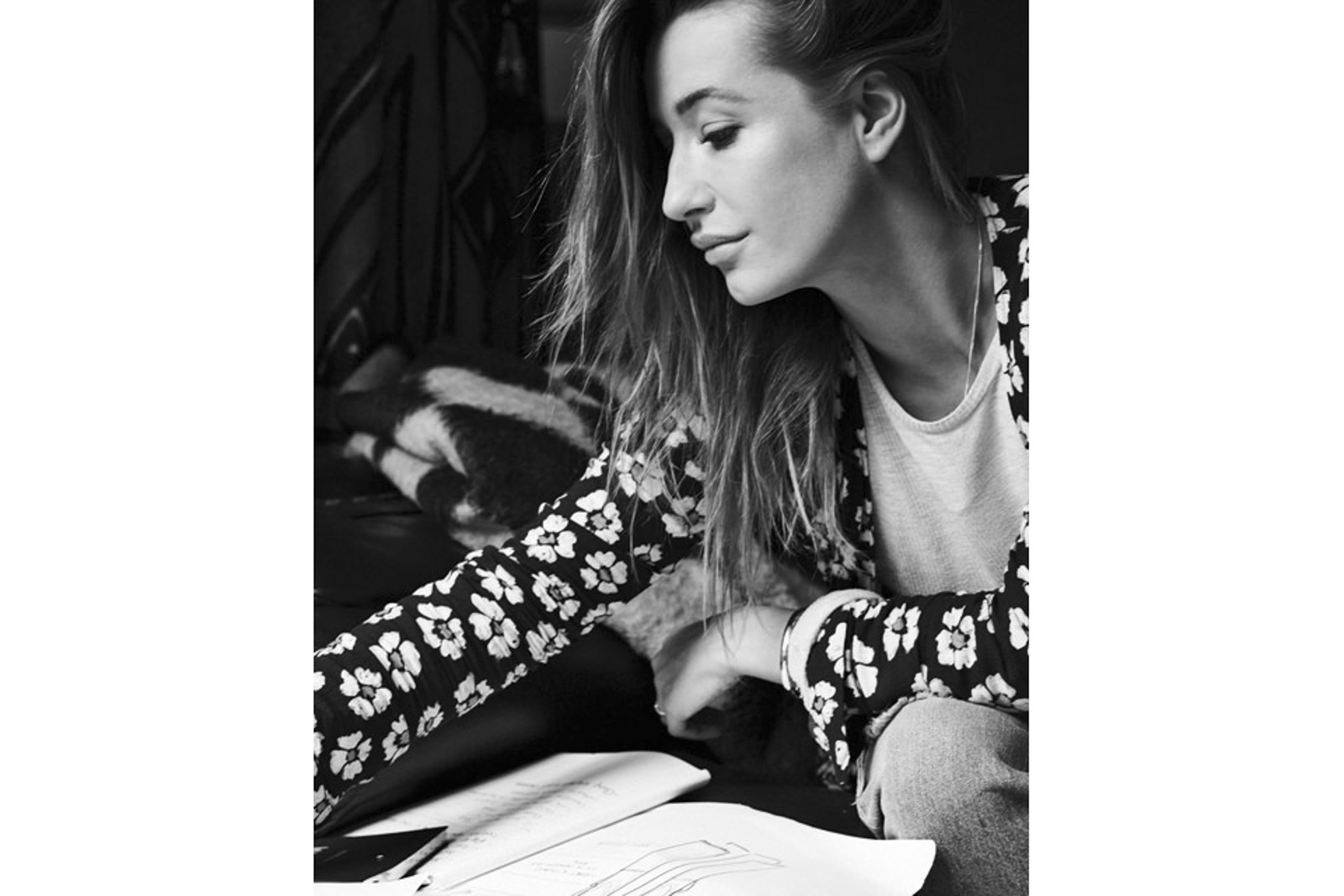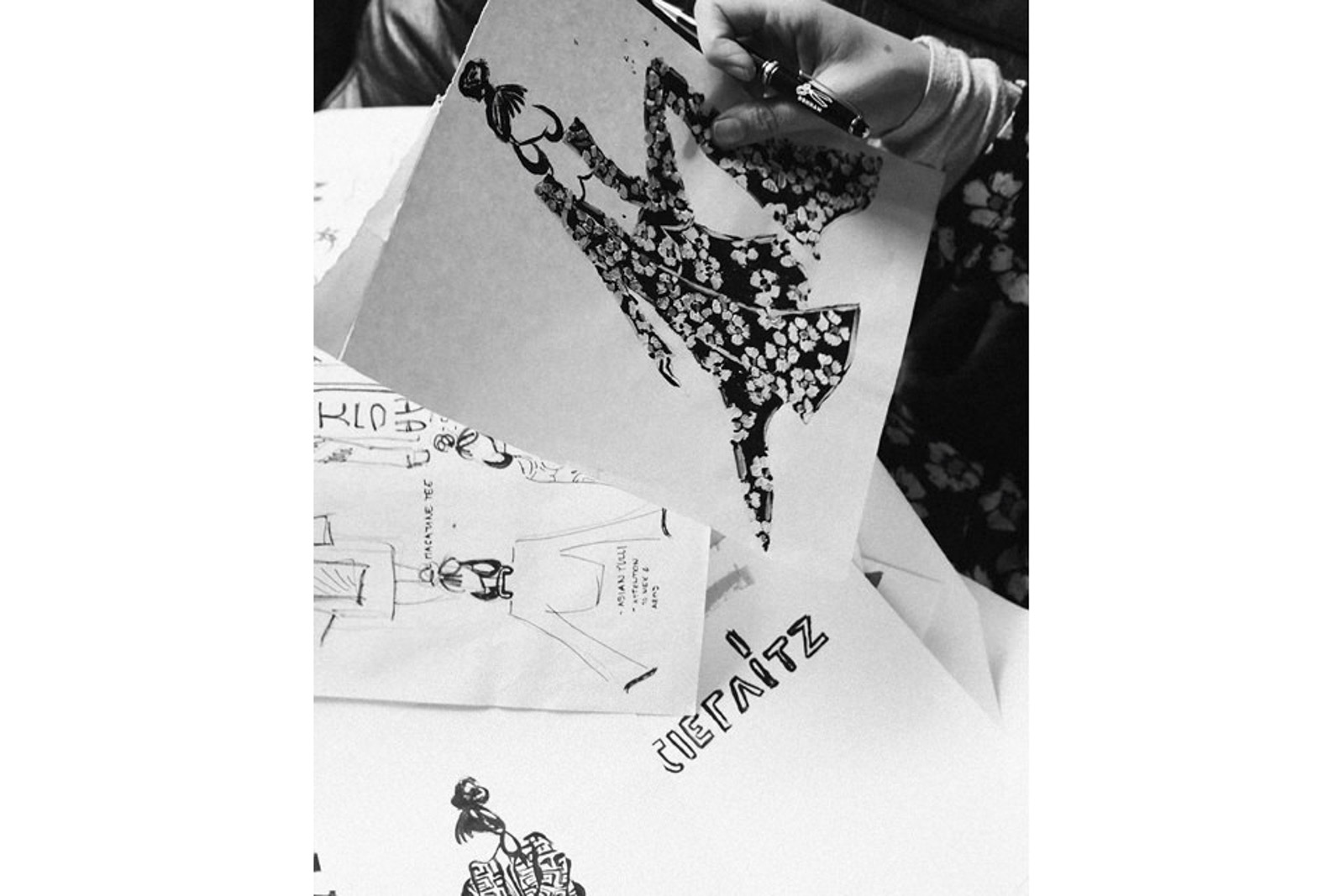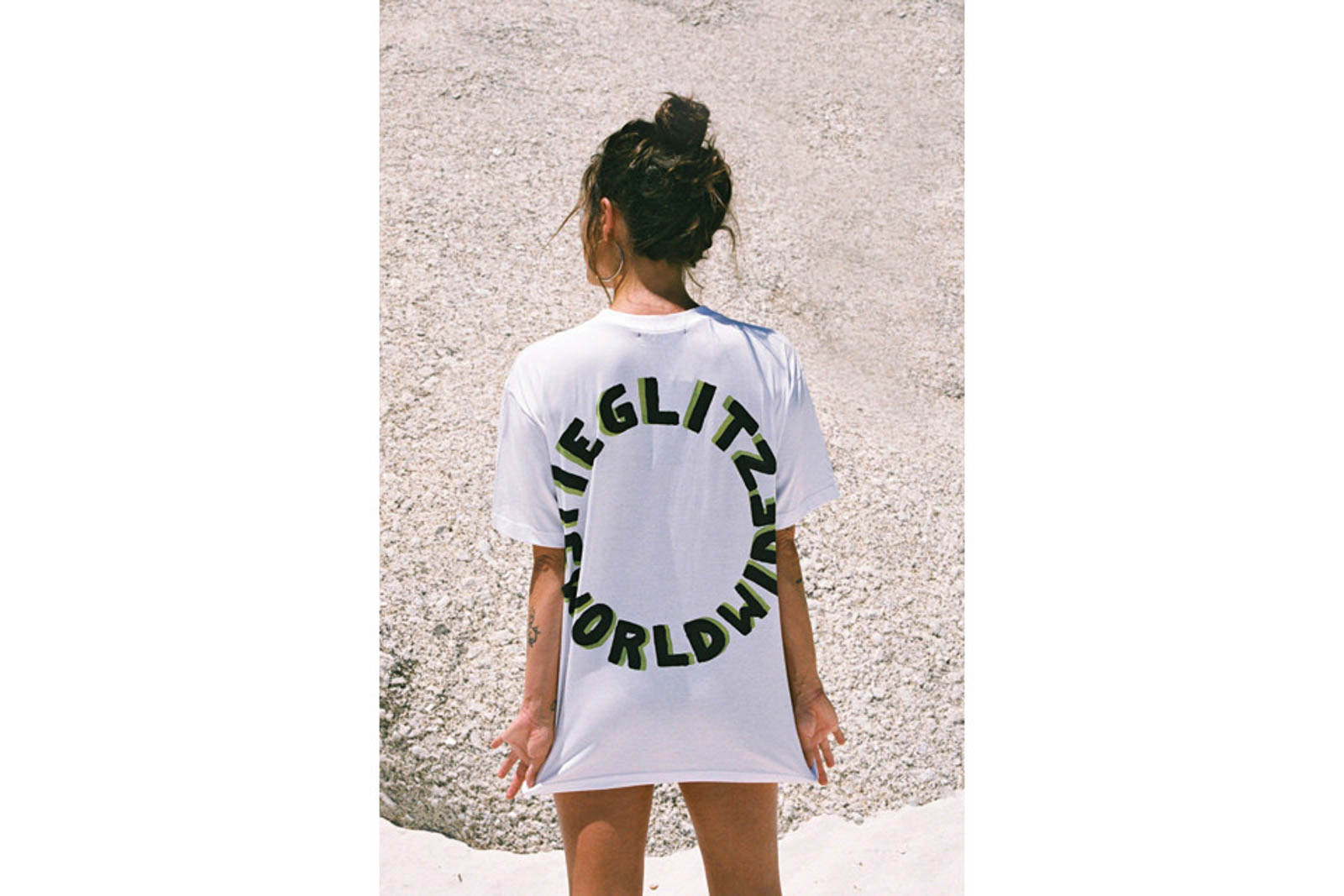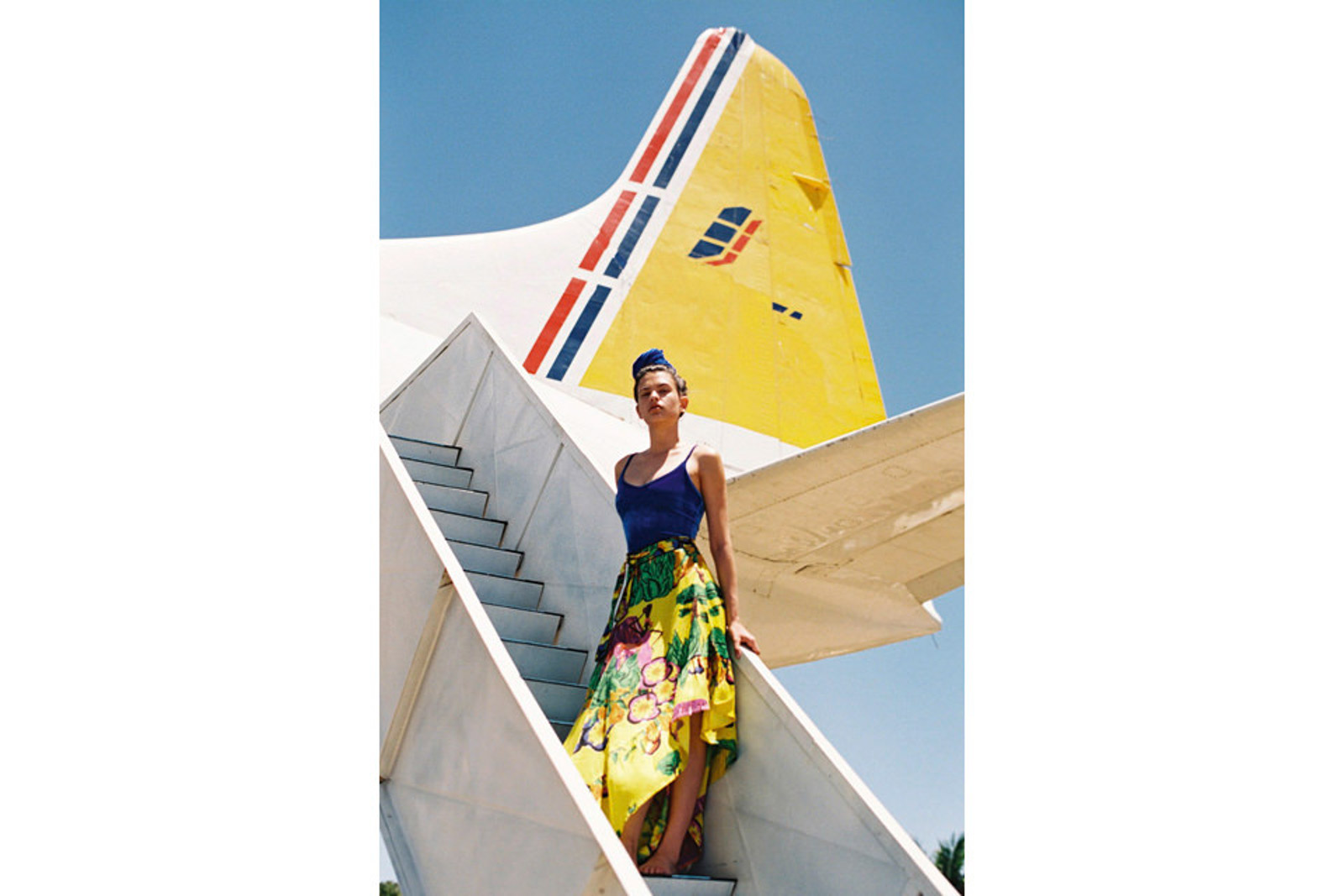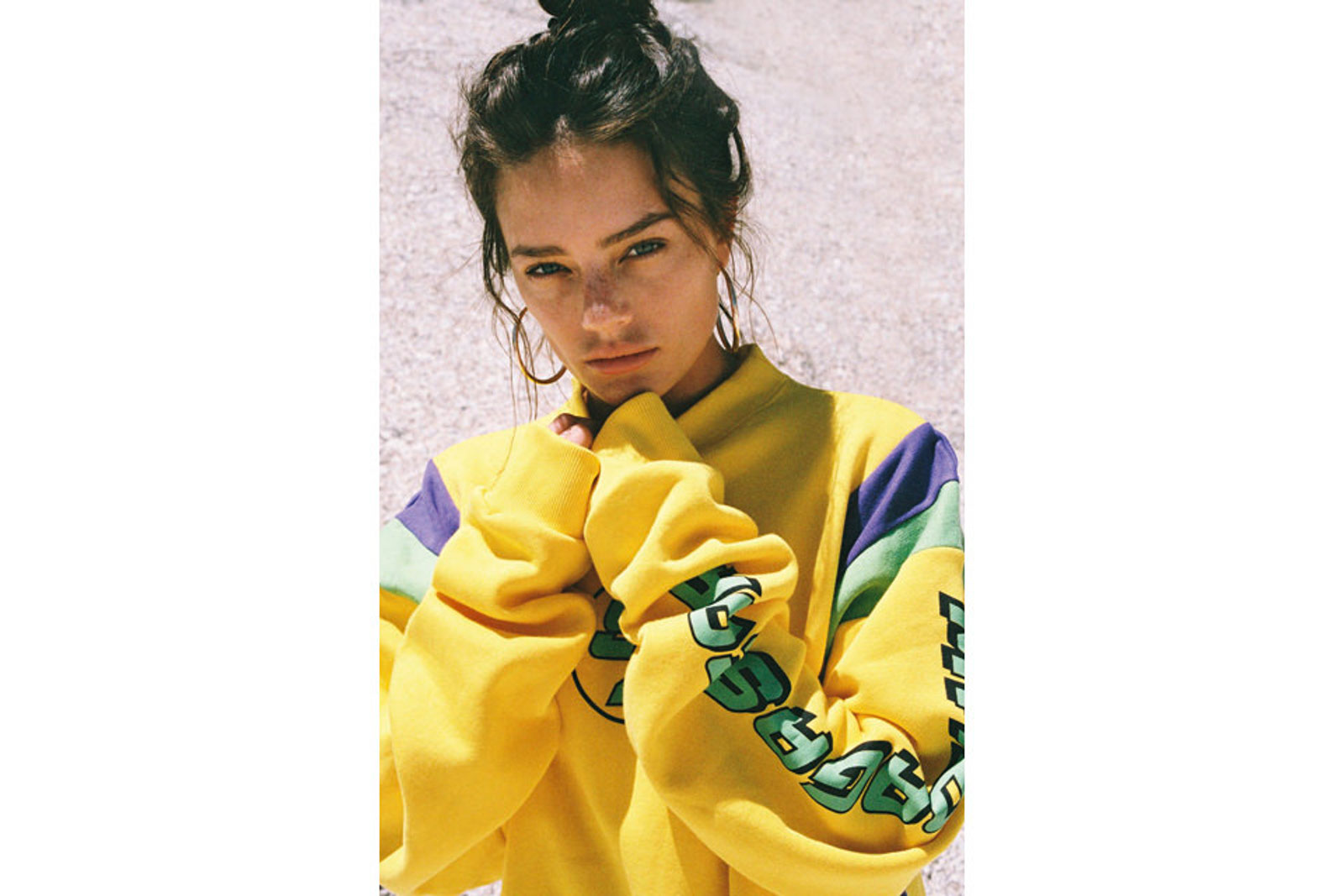Raspberries on the wrap skirt, lemurs on the denim jacket: Pien Stieglitz’s prints are anything but run-of-the-mill. Their collections are already so neat and tidy on the hanger that minimalists see stars. The Dutch designer is not at all interested in making fashionable noise, but in bringing worlds together with the clothing from her label Stieglitz.
FACES: You founded your label Stieglitz in 2014. What were the reasons for designing your own collection?
Pien Stieglitz: After I left drama school, I wanted to take a year off to figure out what I actually wanted to do with my life. The acting thing was just a crazy idea, the decision to pursue this profession didn’t come from the heart. I knew that I wanted to do something with travel and cultures. My mother was a journalist and took me all over the world as a child. There I got to know many tribes and all kinds of cultures and realized that the world we live in is so far removed from that. In my designs, I combine both worlds and capture the beauty of life, which is reflected in my collections.
F: What has been the biggest challenge in recent years?
PS: The most difficult thing is to focus on something. Because my company is growing so fast and getting bigger and bigger, everyone suddenly wants something from me. That means I have to divide my attention, which is really difficult for me as a chaotic person. (laughs)
F: Looking back, what stupid mistakes did you make that you wouldn’t make a second time today?
PS: Definitely a lot! Buying too expensive fabrics, paying too much for shipping, producing non-washable textiles, ooops! There was a lot more, bad. You learn by making mistakes, that’s the way it is.
F: Do you know the hands your clothes go through?
PS: Of course, that’s very important. We work very closely with two small factories, both of which are family businesses. They are located in Greece and Poland.
F: Why do you produce in different countries?
PS: We select our factories according to their quality and specialization, which is why production does not take place entirely in one country or in a single factory.
F: Was it difficult to find the right partners, factories and producers?
PS: Absolutely. It is very difficult to find factories with high quality standards. Many work with cheap materials. But as I design my own prints, it was all the more difficult to find a good factory to put them on the fabric. But I think I found the right one in the end.
F: How sustainable are your collections?
PS: We use high-quality materials that last a long time and are constantly on the lookout for the best materials for our products. Our designs are also sustainable, as they do not follow any particular trend, but can also be combined between collections. It’s great to see our customers integrating pieces from old and new collections into their outfits.
F: What do you enjoy most about your work?
PS: Traveling and shooting. Shoots are my absolute favorite because I can combine the pieces from my new collection on the prettiest models and in the most beautiful places in the world and style them into a look.
F: You only sell your collections with Stieglitz online. Why?
PS: I don’t like wholesale and think that the digital world gives you more freedom. I can be wherever I want and launch new collections whenever it suits me.
F: You use many prints in your collections, all of which you design yourself. Where do you get the inspiration for this?
PS: For each collection, we design prints inspired by specific tribes or countries. I was inspired by Madagascar for the current prints.
F: Do you see the design profession as a job of creating trends or dressing people?
PS: My aim is to create designs through which women can express themselves. I want my clothes to make them strong, independent, sexy and adventurous. I’m not interested in starting a trend, but if I set one with my collections, that’s still nice, of course. (laughs)
F: You often talk about tribes when it comes to your collections. What fascinates you about it?
PS: The culture of special tribes has always impressed me. What fascinates me most is the strength of the collective. With my label, I therefore want to bring different worlds together to create a new, unique Stieglitz world in which each tribe is represented by independent, strong and sexy women.
F: What do you say to people who find working in fashion superficial?
PS: I would keep my answer short: “If you think fashion is superficial, then you have no idea what it’s actually about.”
F: What are the pros and cons of being your own boss?
PS: Having to and being allowed to make decisions. Since you make all the decisions, you can do whatever you want. However, you are also responsible for everything. So it’s a double-edged sword.
F: If you weren’t a designer, what would you be doing?
PS: In this case, my label Stieglitz would not exist. I’d probably be presenting some travel documentary on TV or running a boutique hotel in South America. However, all this could actually happen in the future! Never say never!
F: Do you remember the moment you first saw someone in your clothes on the street?
PS: Oh yes, I remember that well! It was extremely intimidating!
F: There are so many different brands on the market. How great is the pressure to constantly create something new, and how does this competitive behavior make you feel?
PS: To be honest, I don’t see my profession or this field of work as being so competitive. That’s why I never feel under pressure. That’s cool, isn’t it? I would like to see designers working together more. We are all creators! Let’s work together to create even more amazing pieces!
F: You share your private life through Instagram. Do you think this app will bring people closer together or further apart?
PS: There’s not so much going on on my private account. I only post very special moments – for example, when I got engaged, or when I’m on vacation. I have mixed feelings when it comes to Instagram. The app naturally connects people, but it also supports and stimulates feelings such as envy, competitiveness and insecurity.
F: To what extent do clothes give us self-confidence?
PS: If you can express yourself through your clothes and feel good in them. Of course, it doesn’t hurt if you get lots of compliments in a certain outfit. But the most important thing is that you feel great in what you’re wearing.
F: Where do you shop yourself?
PS: It may sound strange, but I hate shopping. (laughs) I mostly shop online in various small stores. And of course I wear my own label.
F: Where do you design your collections?
PS: The best ideas always come to me in the middle of the night. When I wake up, I try to write everything down quickly.
F: What do you miss about home when you travel?
PS: My baby cat Lucy, my fiancé and my bathroom.
F: What do you do on a normal Saturday?
PS: It depends on the weather and my mood. I usually do something cozy with friends or stay at home.
F: Is there another day of the week that you particularly like?
PS: I like montage. A fresh start, good stories from the weekend, and I see my dear colleagues again.
F: Do you wear sweatpants?
PS: Far too often! (laughs)
F: What is the most expensive item in your closet?
PS: My boots from Balenciaga or Yohji Yamamoto.
F: Do you prefer to be over- or underdressed?
PS: Better too much styling than too little, I’m sure of it!
F: What does your home look like?
PS: Very cozy. Because I travel so much and so often, I have a lot of things that I bought abroad.
F: What’s your favorite thing to drink on a cozy evening?
PS: I enjoy a good glass of Chardonnay.
F: Do you prefer to order appetizers or dessert at a restaurant?
PS: The starter!
F: What do you collect?
PS: On my travels I always look out for small figures, sculptures or statues of women.
F: Do you have a lucky charm?
PS: I wear an old Indian coin that shows the number two, my lucky number. I found this piece in Pushkar, an ancient city in India.
F: Do you have any resolutions for this year?
PS: To follow my gut more and do less of what people want me to do, and I want to focus more. But above all, I want to see the world, laugh and have adventures.
F: What do you want your future to look like?
PS: Adventurous!
Pien Stieglitz’ tips for Amsterdam
The most beautiful places
Soho House Amsterdam, with rooftop pool and canal view
Pastis, a small, really great French restaurant
Utrechtsestraat, a very romantic street with lots of cute stores and shop windows
The best place for great photos
The canal, very romantic
The north of the city, more industrial
The best breakfast
Soho House Amsterdam, here you’ll find everything from açai bowls to avocado toast
The restaurant for a romantic dinner
De Klepel, fresh, seasonal and down-to-earth
Coba, the best address for Mexican food
Ceccon’s, homemade pasta and dishes from northern Italy
The Pien Stieglitz collections are available online at www.stieglitz.nl.


